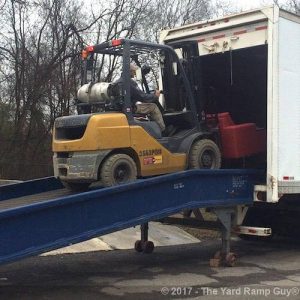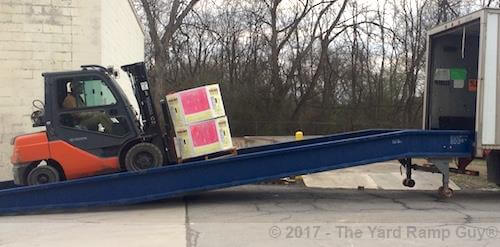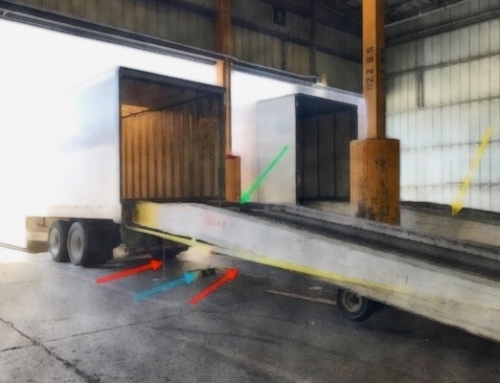Safety First: A Call Worth Making
With The Yard Ramp Guy, business with our customers extends far beyond the transaction for buying or renting inventory. We’re sticklers for the details: asking the right questions to determine exact specifications, overseeing your best and most economical delivery, and doing our best to assure quality control.
We believe in transparency. Whenever we see a potential or actual problem, The Yard Ramp Guy team’s mandate is to alert the customer. If, say, a shipment is delayed, we’ll be the first to proactively deliver the news and then propose a workaround.
Safety is our primary concern. Properly positioned and secured, a yard ramp should function like a good refrigerator—always “on” and at the ready, without complaint and with minimal need for attention.

Here is an excellent example:
Recently, at our request, a customer sent us photographs of one of our yard ramps in use. The photo set was quite good and included a progressive series of a forklift, driving up the ramp, with a small red sofa for placement in the back of a trailer.
On close inspection, however, we saw a glaring safety issue: the two front casters appeared to be touching the ground. We immediately contacted the customer, described the safety concern, and strongly recommended that he swiftly adjust the casters.
The emphasis here is that the casters appeared to be touching the ground. We simply couldn’t determine one way or the other from the photos. And that uncertainty is what prompted our immediate phone call to the customer.
Even with wooden chocks wedged behind the casters, as in the photo at right, the risk was too great. Casters are wheels, designed for movement. And—no matter if your payload is a 40-pound sofa or a 12,000-pound pallet stack—the yard ramp must be firm, stationary, and immobilized.
Bluff Manufacturing made this particular ramp. From their instruction manual:
“Using the hand crank, lower the yard ramp until the lip of the yard ramp is fully engaged on the trailer. Continue raising the wheels until a minimum of 2” inches are clear between the ground and the caster. This insures that as you load or unload the vehicle, the yard ramp will never rest on the wheels.”
All the weight of the ramp should rest upon the back end of the truck where the ramp lip sits.
One of the amazing things about a simple phone call is that it may well prevent injury and loss. It’s always a call worth making.

___________
Quotable
Yes, McCoy Fields . . .we take D-light in the alphabet challenge:





